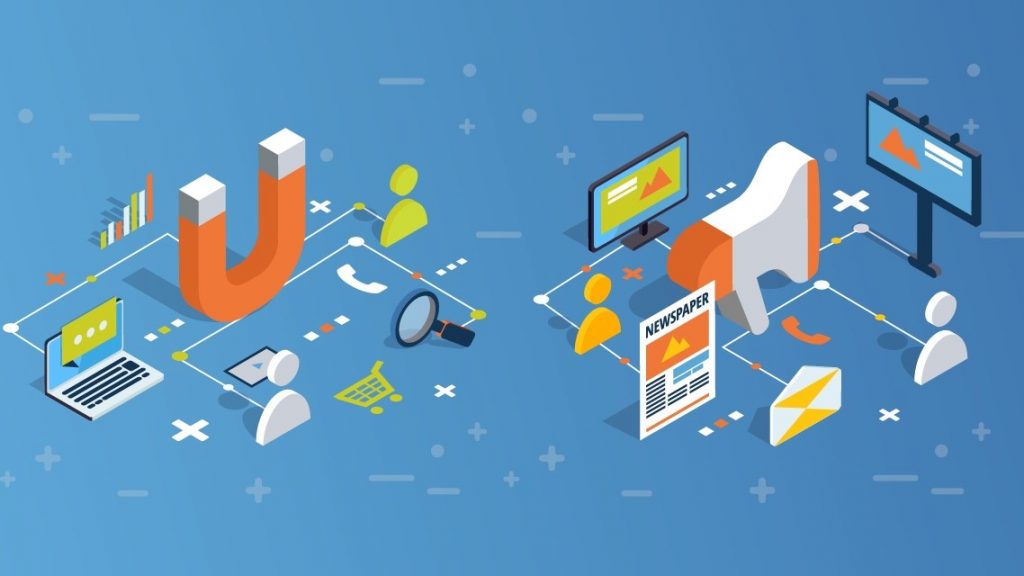No products in the cart.
Uncategorized
Traditional Marketing vs. Inbound Marketing: A Comprehensive Guide
Traditional marketing in its various forms has affected almost everyone. Its entire philosophy rests on different lines: the company communicates at any price, medium, and form while the customer reacts.
The development of electronic technologies has opened up new marketing procedures and has also developed a marketing philosophy known as inbound marketing.
This type of marketing is the opposite of traditional marketing. The company offers the interested help, knowledge, and support in collecting information to meet their needs. This creates trust in the company and is transmitted to the customer.
What is Traditional Marketing?
Traditional marketing methods are becoming ineffective due to:
- Aggressive and frivolous telemarketing: Consumers are losing faith and rejecting such approaches.
- Automated radio and television advertising: People are ignoring these ads and failing to retain information.
- Unappealing email “special offer” ads: Consumers are no longer interested in opening and reading these ads.
This traditional marketing style assumes an adversarial dynamic:
- Companies are the attackers: Consumers are viewed as passive targets.
- Consumers are the defenders: They are not regarded as valued partners.
What is Inbound Marketing?
Basically, the distinction between traditional and electronic marketing had not changed in philosophy, only in functions, tools, activities, and practices. Despite the numerous possibilities, the approach remained the same. However, companies took advantage of all opportunities to contact the potential customer.
Inbound marketing has evolved significantly over the last decade with the evolution of content distribution on the web. Important for this type of marketing was the growing search by consumers for independence and freedom in the face of corporate attacks.
It has also made a major contribution to the notable development of content marketing.
What Makes Inbound Marketing More Effective and Attractive?
This type of marketing does not offer offers or customer protection. To the company, the customer is basically a “hallway” that first seeks information and knowledge about it. It offers that help and when it wants it and when it does not allow it, it does not feel like a consumer.
Customer and Company Communication
People always strive to be informed when they present a need, desire, or problem. Here are 3 tips to give your customers the right information.
Opportunities and Offers to End the Need or Problem
Customers want to know what options are available to solve their problem or need. They want to know about the different products and services that are available, as well as the prices and features of each option. By offering all this information, you can achieve what is called customer journey.
People seek to comprehend the reasons behind their problems or needs and desire the ability to determine if there’s a resolution they can independently address. Key to this understanding is the information about what the company can provide to its customers, including insights into the company’s reputation and customer service.
However, this information holds little positive impact for your company if there is a lack of trust or if it’s outdated. Offering customers the chance to read reviews and testimonials becomes crucial in providing them with a clearer understanding of what to expect.
Values of the Product or Service
Customers seek not only to comprehend the advantages of a product or service but also to grasp any potential drawbacks. In a customer-oriented marketing approach, it becomes paramount to provide comprehensive insights into the benefits while addressing any concerns or limitations transparently.
By offering a balanced perspective, businesses can foster trust and loyalty. This customer-centric strategy prioritizes delivering valuable information to empower consumers in making informed decisions, ultimately strengthening the bond between the company and its clientele
Self-Knowledge and Personal Development
The company does not know the current state of the potential customer and the intensity of the need to solve the problem. It detects common problems, common trends, and customer behavior. It offers information, knowledge, and professional support for these problems.
Through its content, it offers the opportunity to see the problem for yourself, the paths of your choice, and to identify the products or services.
As we can see, the company provides information to those who need it and convinces them with the quality of the information and the willingness to listen to it. The quality of the information is closely linked to the ability to identify needs. Being able to identify and solve a problem means, therefore, being able to make an offer that completes this process.
DISCOVER HOW TO MONETIZE TIKTOK
EN/ES

